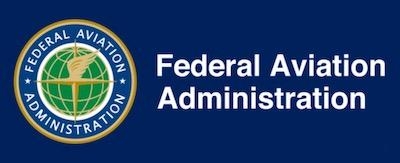SAIB Indicates Some Have Experienced Cracking In Service
The FAA has issued a Special Airworthiness Information Bulletin (SAIB) following the discovery that some Lycoming engines equipped with certain Parallel Valve Cylinders and Head Assemblies, which were shipped from Lycoming between September 1, 2013 and April 30, 2015, have experienced cracking in service.

According to the SAIB, The FAA has received reports of cylinders cracking on Lycoming engines, excluding Lycoming 0-235 series engines, between the 14th and 15th cylinder cooling fins on the intake valve side of the cylinder. Cracks may occur at any time.
These cracks may be accompanied by one or more of the following events: loss of power, rough running engine, high cylinder head temperature, cylinder head temperature spread exceeds 50 degrees F, whistling sound during idle or during a compression test, decreased cylinder and head assembly service life.
Lycoming published Lycoming Mandatory Service Bulletin (MSB) No. 634, dated October 11, 2018, to address the cylinder and head assembly cracking. Lycoming MSB No. 634 lists the population of affected cylinders and head assemblies, identifies symptoms, and cautions not to repair, refurbish, or overhaul the affected cylinder and head assemblies. This MSB provides a recommendation only. You are not required to comply with Lycoming MSB No. 634 as you are with an Airworthiness Directive or content in the Airworthiness Limitation Section of an Engine Maintenance Manual. Lycoming has not published any information on the repair of cylinders because their policy has been to replace cylinders at engine overhaul. In addition, Lycoming does not authorize or recommend that third parties repair cylinders.
While independent repair shops have successfully repaired cylinders, FAA Advisory Circular (AC) 33-6, Change 1, “Weld Repair of Aluminum Crankcases and Cylinders of Piston Engines,” dated February 27, 2017, acknowledges that “there are many repair stations in the aviation industry that have talented and knowledgeable personnel who are performing a much needed service in repairing otherwise unserviceable parts. However, the FAA has been made aware of repaired crankcases and cylinders which have failed in-service, resulting in accidents.” FAA AC 33-6 does not specify the reason for the failures after welding, but are probably due to inherent challenges of welding aluminum when repairing cylinder heads. One such challenge is cleaning the part to remove the aluminum oxide that forms when aluminum is exposed to air. This challenge is due to the difference of melting points as aluminum oxide melts at 3700 degrees F and aluminum melts at 1200 degrees F.
After a weld repair, the most common inspection techniques available to general aviation repair facilities are dye penetrant inspection (DPI) and fluorescent penetrant inspection (FPI) per AMS 2645 or ASTM E1417. These two inspection techniques, however, only inspect the surface of the weld, which leaves the internal structure of the weld unknown. Radiographic or ultrasonic inspection techniques can be used to inspect the surface and internal structure of the weld for incomplete penetration, incomplete fusion, and porosity. However, even radiographic and ultrasonic inspections can miss discontinuities in areas with rough surfaces or complex geometric shapes. Therefore, the FAA recommends that the affected cylinders and head assemblies be replaced, rather than repaired.
The FAA recommends the following:
- Determine if your engine contains an affected cylinder and head assembly with the local thin wall condition using Table 1 of Lycoming MSB No. 634, dated October 11, 2018, or later revision.
- If your engine contains an affected cylinder and head assembly perform the following: If any of the events identified in the Background paragraph of this SAIB occurs, or if you suspect an exhaust leak, visually inspect between the cooling fins and/or for exhaust stains on the cooling fins for cracks, and perform a compression check using Lycoming Service Instruction (SI) 1191A, dated September 28, 1998, or later revision, before further flight.
- During a scheduled or unscheduled maintenance of the engine (such as an oil change), visually inspect between the cooling fins and/or for exhaust stains on the cooling fins for cracks, and perform a compression check using Lycoming SI 1191A, dated September 28, 1998, or later revision.
- When the engine reaches overhaul time as specified in Table 1 of Lycoming SI 1009BC, dated May 9, 2018, remove all cylinders affected by Lycoming MSB No. 634, dated October 11, 2018, or later revision, with or without cracks, and replace them with new or serviceable cylinders that are not affected by Lycoming MSB No. 634.
- If you find a leak, the FAA recommends that you replace the cylinder with new or serviceable cylinders that are not affected by Lycoming MSB No. 634, dated October 11, 2018, or later revision. We do not recommend repairing the cylinder.
- The FAA also recommends that you do not install cylinders affected by Lycoming MSB No. 634 on any engine.
(Source: FAA)
 Bolen Gives Congress a Rare Thumbs-Up
Bolen Gives Congress a Rare Thumbs-Up The SportPlane Resource Guide RETURNS!!!!
The SportPlane Resource Guide RETURNS!!!! Buying Sprees Continue: Textron eAviation Takes On Amazilia Aerospace
Buying Sprees Continue: Textron eAviation Takes On Amazilia Aerospace Hawker 4000 Bizjets Gain Nav System, Data Link STC
Hawker 4000 Bizjets Gain Nav System, Data Link STC Echodyne Gets BVLOS Waiver for AiRanger Aircraft
Echodyne Gets BVLOS Waiver for AiRanger Aircraft



